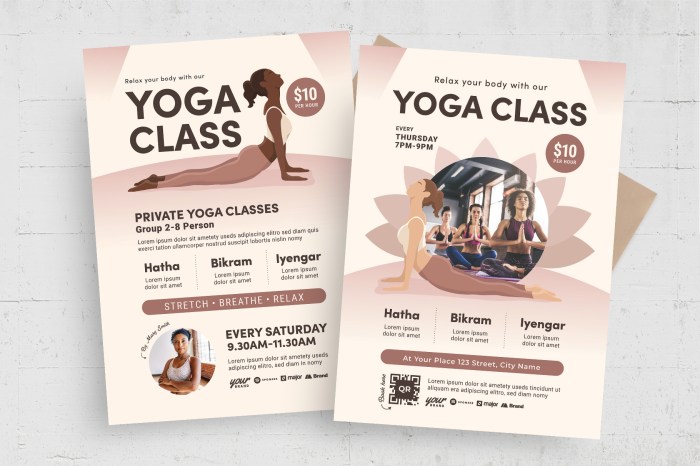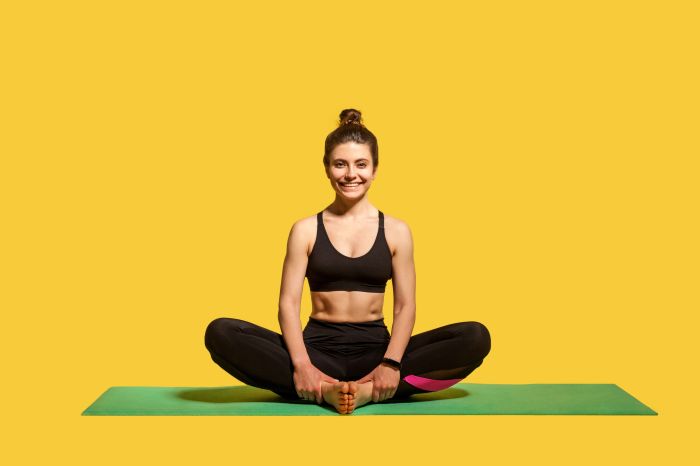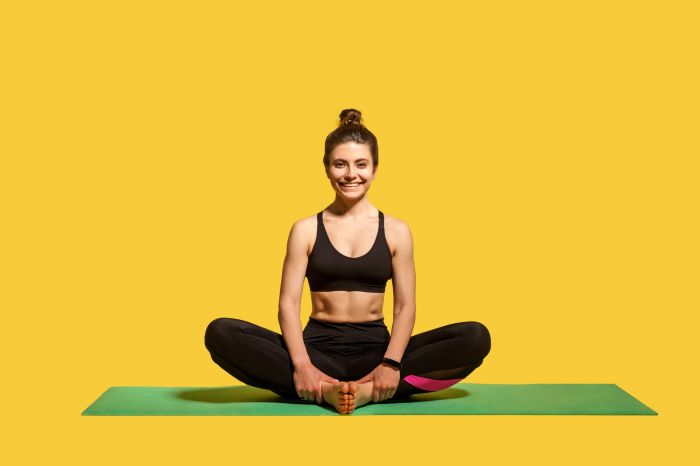Yoga for Beginners sets the foundation for a transformative experience, blending physical and mental benefits into a harmonious practice that fosters growth and well-being. Dive into the world of yoga and unlock the potential within you.
Embark on this journey with an open mind and a willingness to explore the depths of your inner self through the art of yoga.
Benefits of Yoga for Beginners
Yoga offers a wide range of benefits for beginners, both physically and mentally. It is a great way to improve overall well-being and health.
Physical Benefits
- Improves flexibility: Yoga helps beginners gradually increase flexibility in their muscles and joints, leading to improved range of motion.
- Builds strength: Through various poses and movements, beginners can strengthen different muscle groups, enhancing overall physical strength.
- Enhances balance and posture: Practicing yoga can help beginners improve their balance and posture, leading to better alignment and reduced risk of injuries.
- Increases stamina: Regular yoga practice can boost endurance levels, allowing beginners to engage in physical activities for longer periods.
Mental Benefits
- Reduces stress: Yoga promotes relaxation and stress relief through deep breathing techniques and meditation, helping beginners unwind and find peace of mind.
- Boosts mood: The release of endorphins during yoga practice can uplift mood and promote a sense of well-being among beginners.
- Improves focus and concentration: By focusing on breath and movement, beginners can enhance their concentration skills and mental clarity.
- Encourages mindfulness: Yoga encourages beginners to be present in the moment, fostering a sense of mindfulness and awareness.
Essential Yoga Poses for Beginners

Starting your yoga journey as a beginner can be both exciting and overwhelming. Here are some essential yoga poses that are beginner-friendly and will help you build a strong foundation for your practice.
Mountain Pose (Tadasana)
Mountain Pose is a great starting point for beginners to learn about body alignment and posture. Stand tall with your feet hip-width apart, arms by your sides, and palms facing forward. Engage your core, lengthen your spine, and relax your shoulders.
Child’s Pose (Balasana)
Child’s Pose is a resting pose that helps to stretch the back, hips, and thighs. Start on your hands and knees, then sit back on your heels while reaching your arms forward. Rest your forehead on the mat and take deep breaths to relax.
Downward Facing Dog (Adho Mukha Svanasana)
Downward Facing Dog is a foundational pose that stretches the entire body, particularly the shoulders, hamstrings, and calves. Begin on your hands and knees, then lift your hips up and back, forming an inverted V-shape. Press your hands into the mat and straighten your legs as much as you can.
Warrior II (Virabhadrasana II)
Warrior II is a standing pose that strengthens the legs and opens the hips and chest. Step your feet wide apart, bend your front knee over the ankle, and extend your arms out to the sides. Keep your gaze over your front hand and sink deeper into the lunge.
Cat-Cow Stretch (Chakravakasana)
The Cat-Cow Stretch is a gentle flow between two poses that helps to warm up the spine and improve flexibility. Start on your hands and knees, arch your back up like a cat on an exhale, and then drop your belly down and lift your head on an inhale like a cow.
Breathing Techniques in Yoga: Yoga For Beginners

Proper breathing is essential in yoga practice for beginners as it helps to increase focus, relax the mind, and improve overall well-being. Incorporating breathing techniques, also known as pranayama, can greatly enhance the benefits of yoga for beginners.
Benefits of Pranayama for Beginners
- Pranayama techniques help beginners relax by calming the mind and reducing stress levels.
- Improved focus and concentration can be achieved through the practice of pranayama, making it easier to stay present during yoga sessions.
- Regulating the breath through pranayama can also help beginners connect with their body and movements more deeply.
Simple Breathing Exercises for Beginners, Yoga for Beginners
- Deep Breathing: Inhale deeply through the nose, expanding the belly, then exhale slowly through the mouth, emptying the lungs completely. Repeat for several breaths.
- Alternate Nostril Breathing: Close one nostril with your thumb, inhale through the other nostril, then close that nostril with your ring finger as you exhale through the opposite nostril. Switch sides and repeat.
- 4-7-8 Breathing: Inhale for a count of 4, hold the breath for a count of 7, then exhale for a count of 8. This breathing exercise can help calm the nervous system.
Tips for Starting a Home Yoga Practice
Starting a yoga practice at home can be a great way for beginners to build strength, flexibility, and relaxation. Here are some tips to help you get started:
Creating a Conducive Space
Creating a dedicated space for your yoga practice at home can help you focus and get into the right mindset. Here are some tips for setting up a yoga-friendly space:
- Choose a quiet and clutter-free area where you can move freely.
- Add some calming elements like candles, incense, or plants to create a peaceful atmosphere.
- Invest in a good quality yoga mat and props to support your practice.
- Consider playing soft music or using a guided meditation app to enhance your practice.
Setting a Regular Practice Schedule
Consistency is key when starting a home yoga practice. Here are some tips for setting a regular practice schedule:
- Choose a time of day that works best for you, whether it’s in the morning to kickstart your day or in the evening to unwind.
- Start with shorter sessions and gradually increase the duration as you build strength and endurance.
- Commit to practicing yoga at least a few times a week to see progress and feel the benefits.
- Use a yoga journal to track your progress and stay motivated.
Importance of Patience and Self-Compassion
Starting a home yoga practice can be challenging, especially for beginners. Remember to be patient and kind to yourself throughout the process. Here’s why it’s important:
- Yoga is a journey, not a destination, so progress may take time. Be patient with yourself and trust the process.
- Listen to your body and practice self-compassion by honoring your limitations and avoiding self-criticism.
- Celebrate small victories and improvements along the way to stay motivated and inspired.
- Remember that yoga is about self-care and self-discovery, so enjoy the journey and embrace the growth it brings.
